Issue #136: Spicy-Sweet Korean BBQ Pork Belly
Learning About Korean BBQ, A Few Seoul Recommendations, Recipe for Korean Pork Belly BBQ
Among the many things I learned about Korean restaurants on my eye- and palate-opening trip to Seoul last October, one of the most unexpected was that Korean BBQ restaurants specialize in one type of meat or another. If you want galbi (beef short ribs) you go to a galbi restaurant. If you want barbecued pork, you have to go to another.
Back home on 32nd Street, in Flushing, or in Fort Lee, BBQ restaurants grill whatever meat you want. Seafood, too.
From the perspective of craft, such specialization makes sense. The butchering, marinating, and barbecuing skills required for one type of meat, not to mention the facilities required to do them, are not necessarily transferable. And in a culture that clearly takes its food very seriously, there’s an audience who will notice and pay for such expertise. I love this.
During the trip we had an impressive demonstration and tasting of beef butchering and barbecuing skills at the elegant Byeokje Galbi Cheongdam. We had exemplary bulgogi (marinated short ribs) at the beloved Uraeok Gangnam. We enjoyed a fun and delicious pork barbecue meal at the new, boisterous Samcheong Sutbul Garden. And perhaps the most memorable barbecue meal we had was at Youngdong Eel, which specializes in grilling live, freshwater eel. I highly recommend all four.
Another revelation about Korean BBQ is that it doesn’t all happen on an open grill set over charcoal. In fact, the chef of Byeokje Galbi shared with us his vast collection of grills, which ranged from flat, open-wire grates to solid domed cast-iron griddles. The variety was surprising. Some are regional, some are proprietary, still others are considered better for one dish or another. Though appreciated, not much is widely known about the history and culture of Korean barbecue, according to chef/author Jungyoon Choi, who has founded a new culinary cultural center called Nanro that is researching the subject.
In addition to a finer appreciation of the subtleties and distinctions of Korean barbecue, what I took away from all this new information was that I might be able to make an acceptable version of some barbecue dishes at home.
For the last couple of months I’ve been experimenting with grilled pork belly, which like most Korean barbecue is really easy to prepare. The hardest part is actually finding pork belly sliced thin and even enough for this preparation. I am fortunate to live just up the street from an outpost of the celebrated Korean grocer H-Mart, where they always have several different qualities of pork belly sliced and ready to grill.
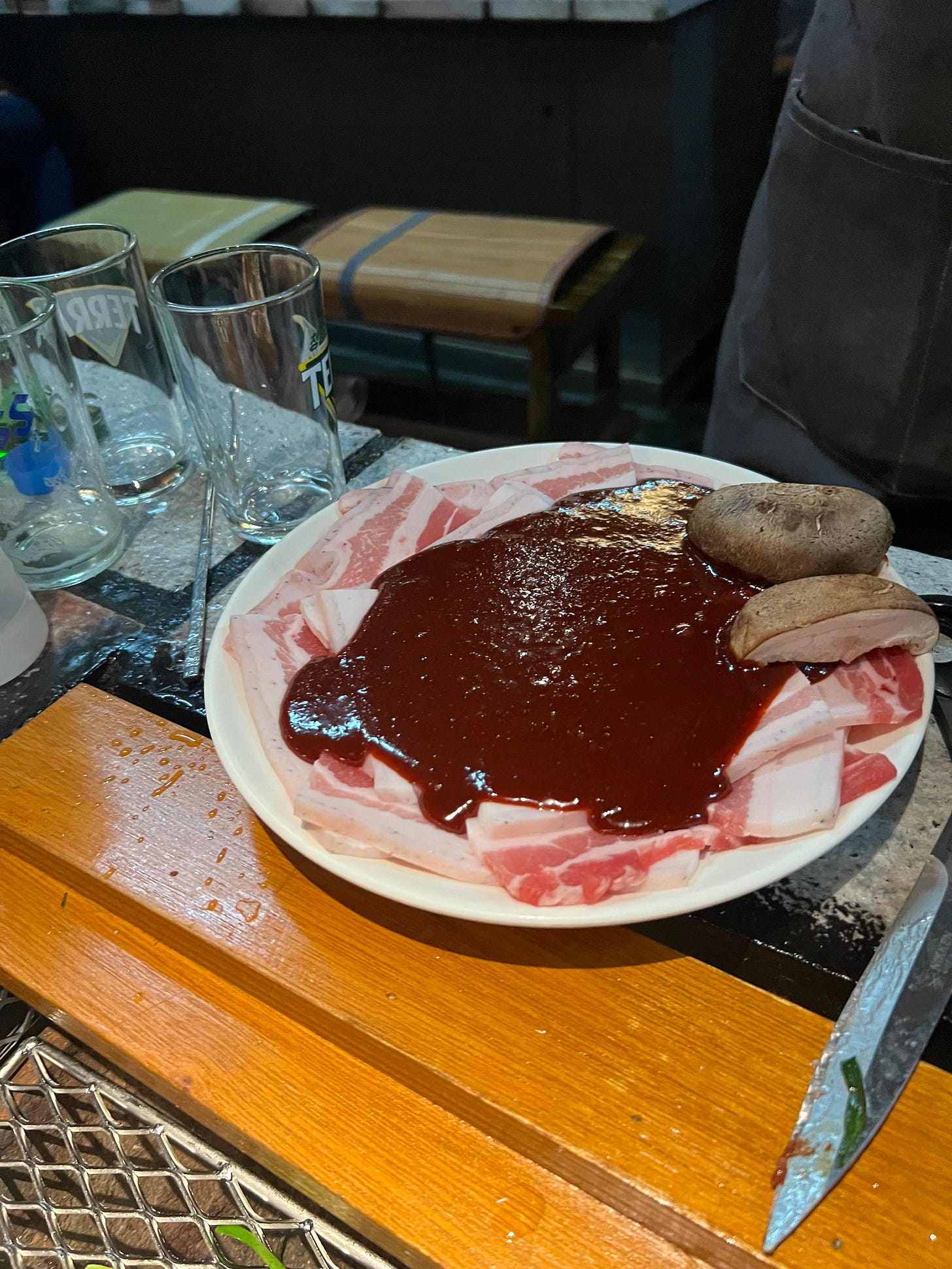
If you can’t find sliced pork belly, you can buy a 2- or 3-inch wide piece of pork belly or pork shoulder and slice it yourself. It works best if you freeze it for 30 minutes or so until just firm. Then using a sharp knife, slice it less than 1/8 of an inch thick, like bacon. If the fat starts to warm up and become too soft to slice evenly, put it back in the freezer for a bit and then keep going. If that’s all too much of a production, use any cut of thinly sliced pork you can find.
The rest is easy.
Using recipes in Junghyun Park and Jungyoon Choi’s Korean Cookbook as my guide, I’ve made pork belly marinated a spicy-sweet mixture of gochujang (fermented chili paste) and gochugaru (chili powder) like we enjoyed at Samcheong Sutbul Garden that I “grilled” in a hot cast-iron pan.
Serve this pork belly with lettuce leaves, kimchi, a selection of vegetable side dishes or namul (see Issue #137) and rice for your guests to roll up and enjoy.
RECIPE: Gochujang-Marinated Pork Belly
(Makes enough for 4 to 6, depending on what else you are serving.)
3 tablespoons gochujang (Korean chili paste)
2 tablespoons water
1 tablespoon gochugaru (Korean chili powder)
1 tablespoon light soy sauce
1 tablespoon mirin (sweet Japanese rice wine)
1 tablespoon Korean rice syrup, honey, or brown sugar
1 ½ teaspoons toasted sesame oil
1 large clove garlic, minced
1 teaspoon toasted sesame seeds
¼ teaspoon freshly ground black pepper
14 ounces pork belly or picnic shoulder, thinly sliced
1 tablespoon vegetable oil
In the bottom of a medium bowl, combine the gochujang, water, gochugaru, soy sauce, mirin, Korean rice syrup, sesame oil, garlic, sesame seeds, and black pepper and whisk until blended. Add the slices of pork to the bowl, one at a time, moving them around to coat. Cover and let sit at room temperature for at least 30 minutes, or better, in the fridge overnight.
To cook, heat a large cast iron pan over high heat. If you have a hood over your stove, turn it on (or open a window and cover the smoke detectors). Add the vegetable oil and fry the slices of marinated pork flat until just cooked through, flip and fry the second side. Serve on a hot platter with all the fixin’s to make ssam (lettuce leaves, vegetable side dishes, kimchi and rice).



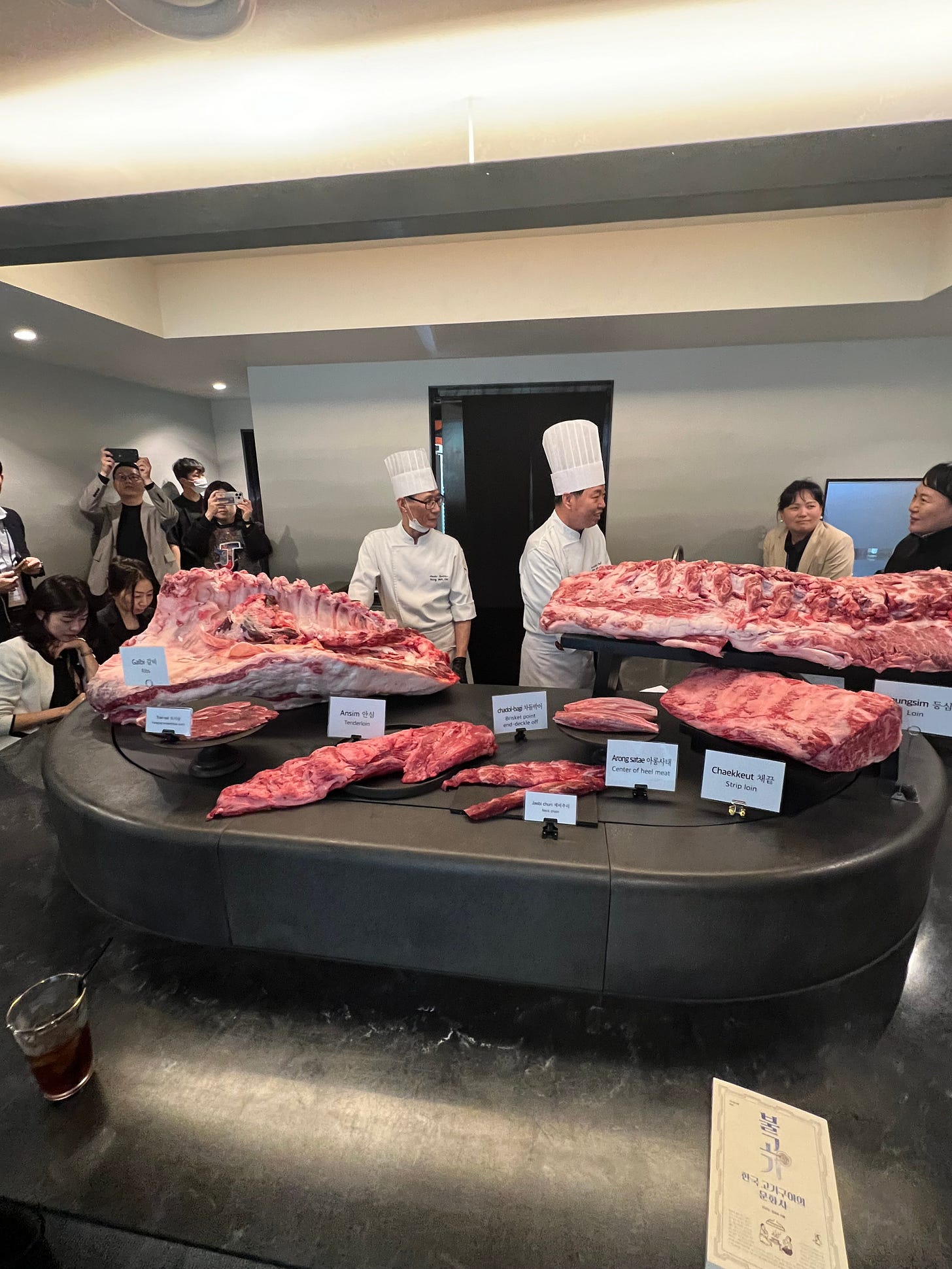
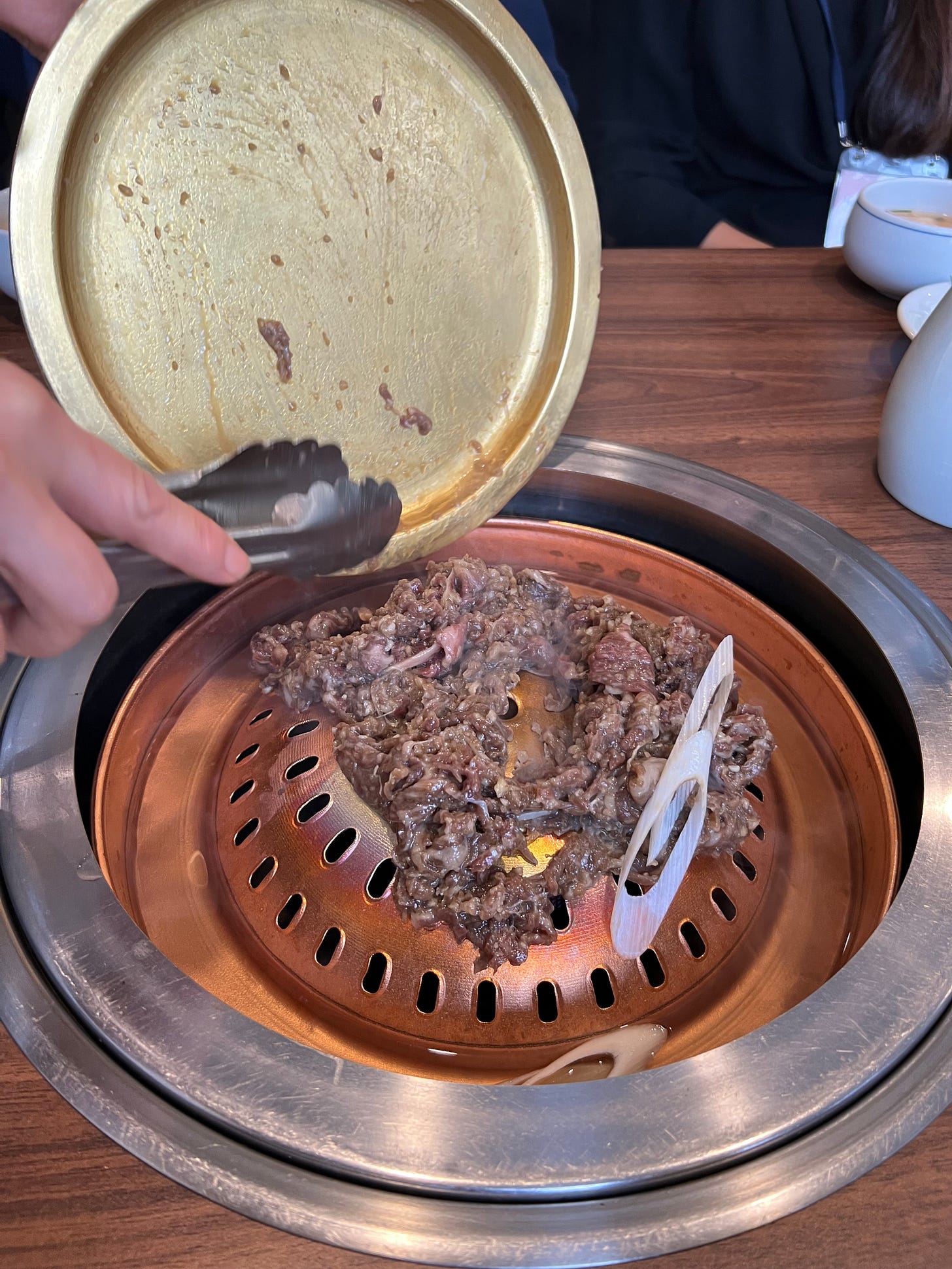
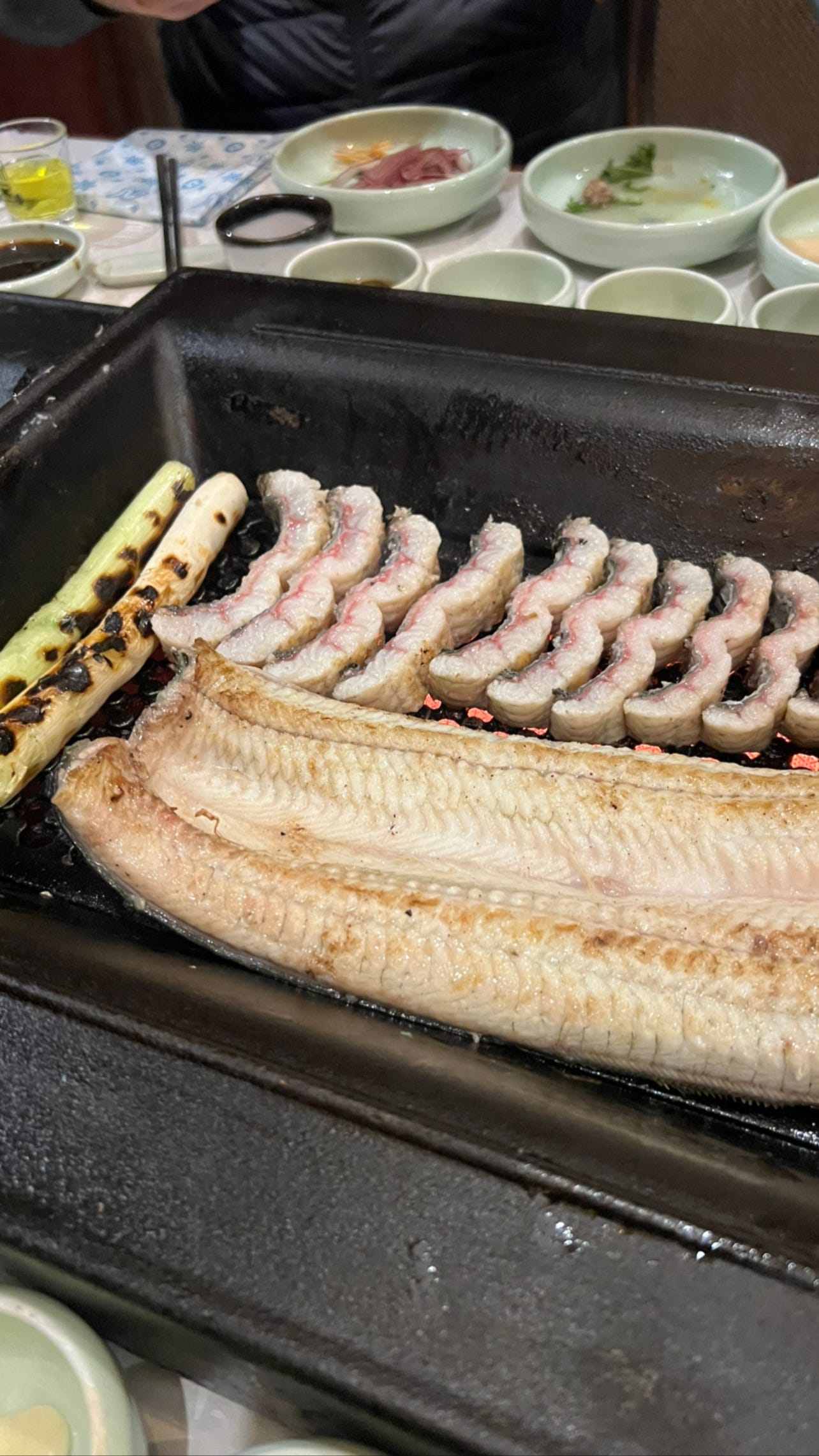
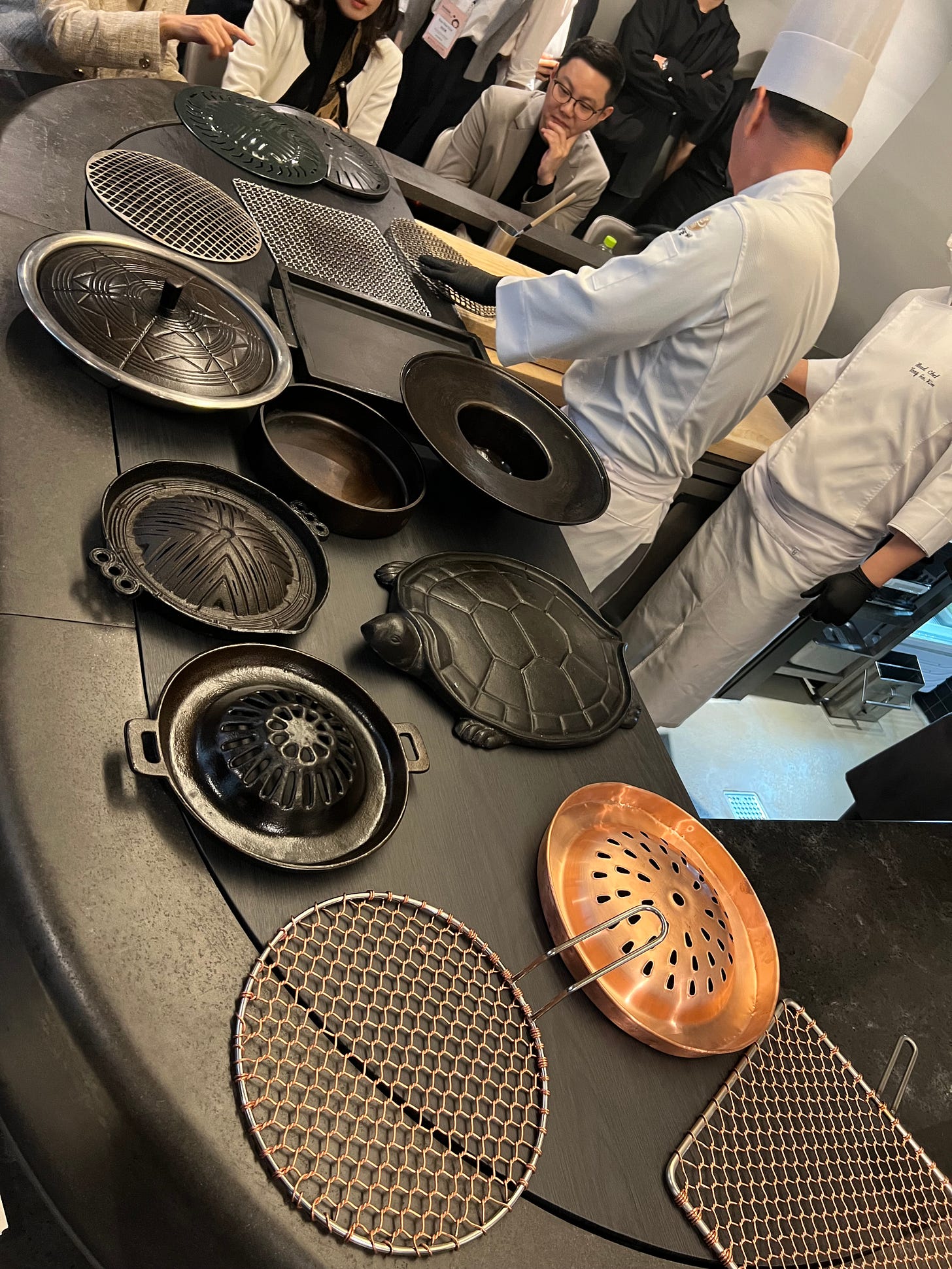
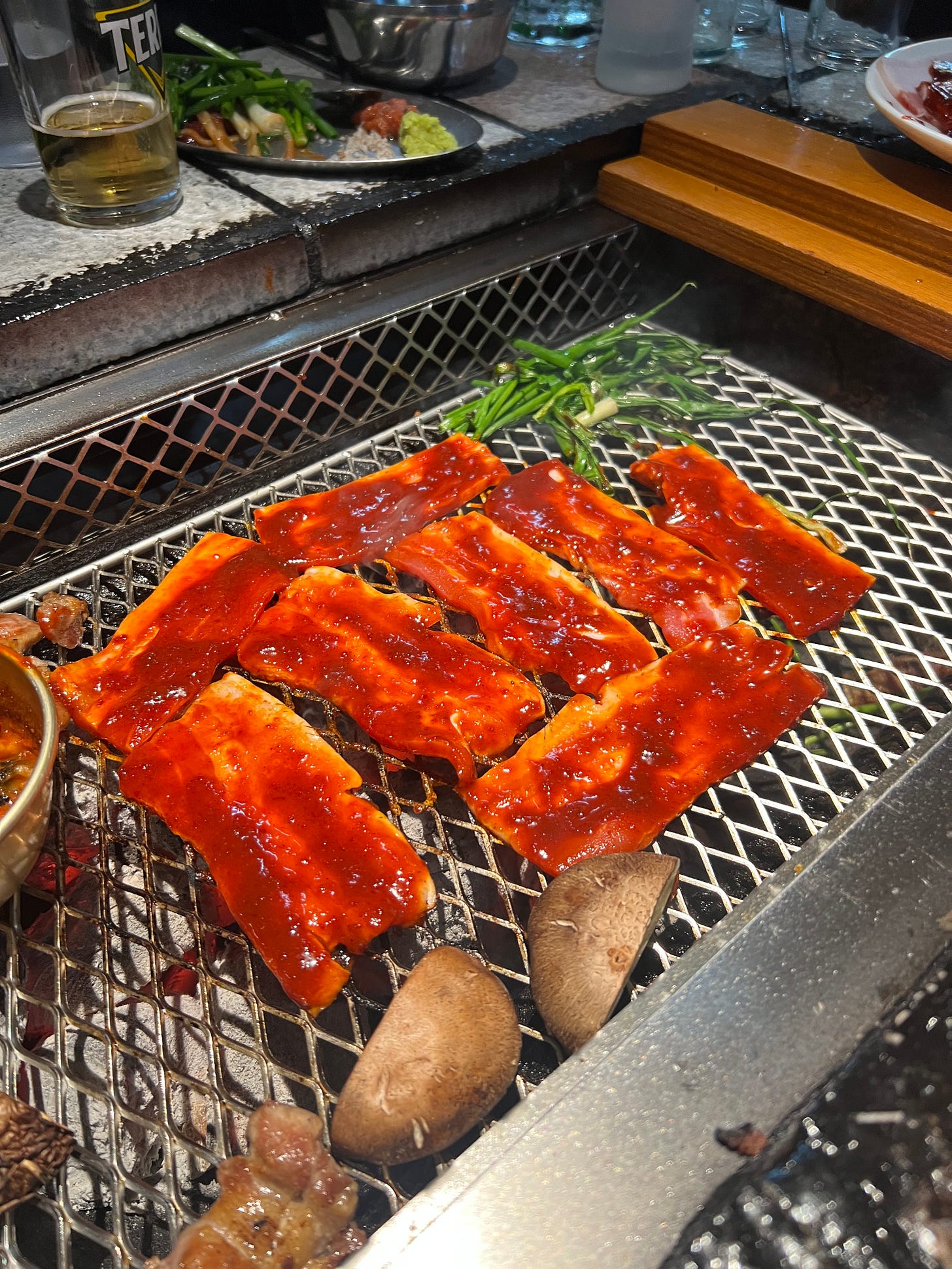
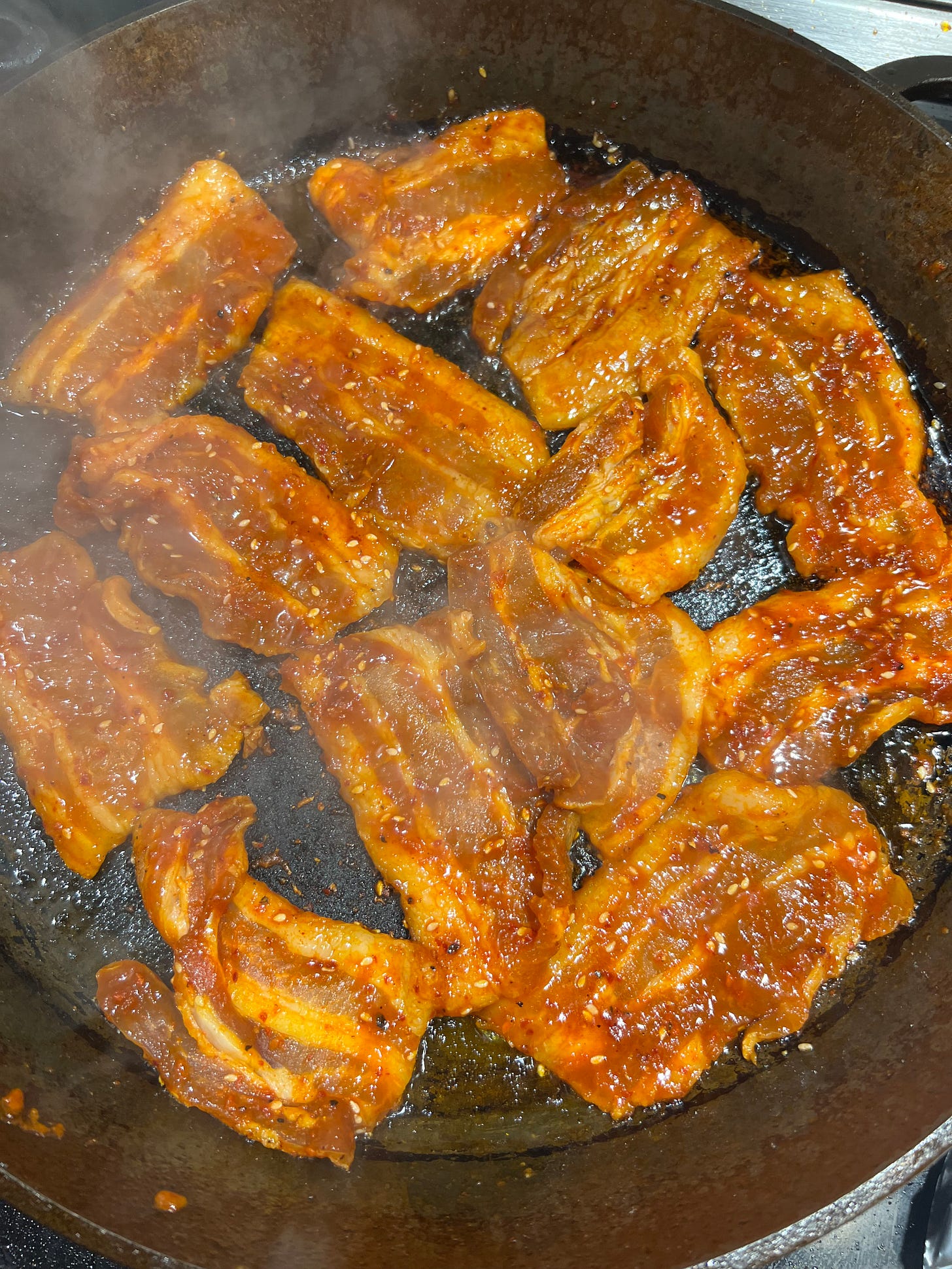
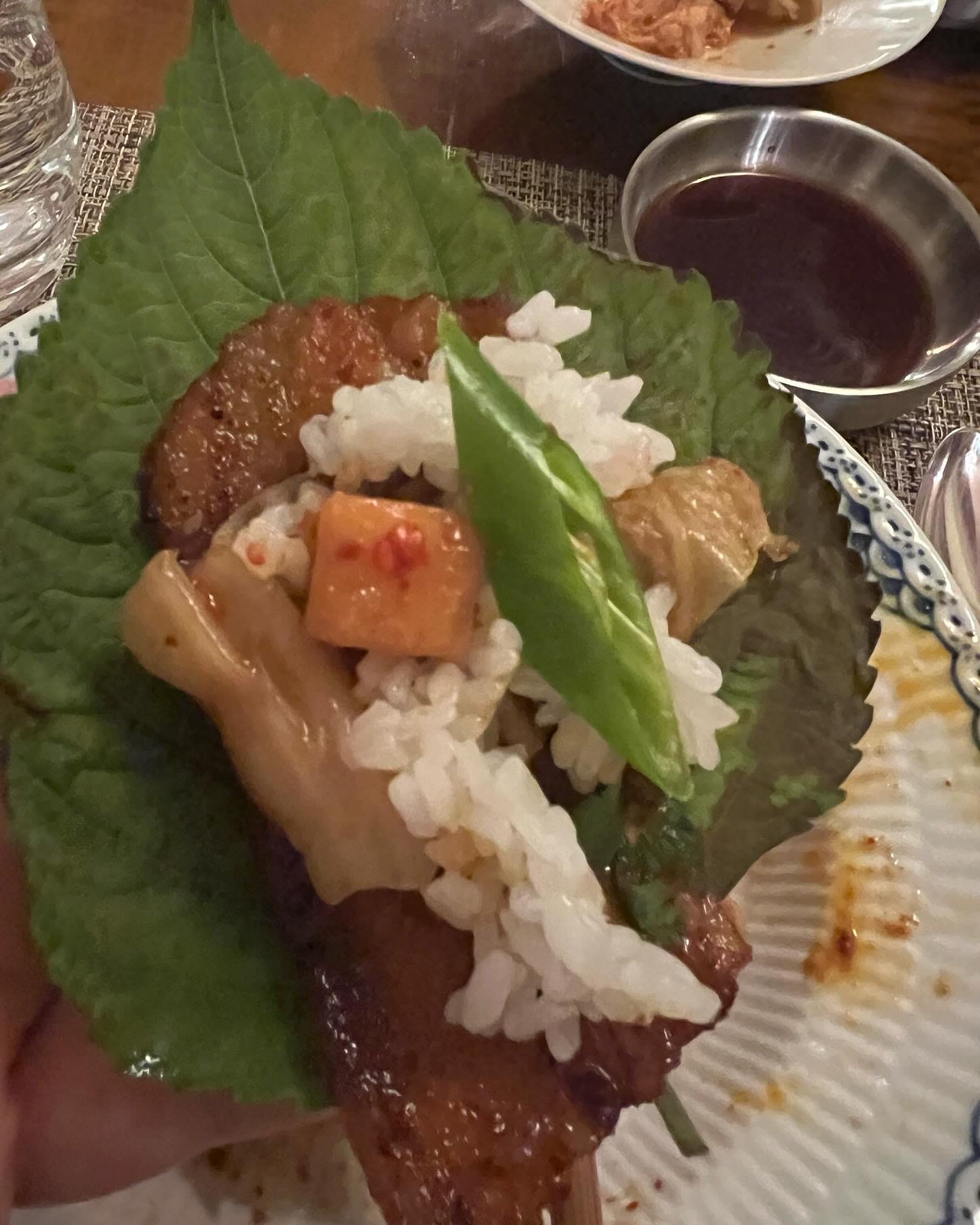
Sounds delicious! Excellent column, as usual. We have a H Mart on the UWS also ... what a great store. Marcia & Jack